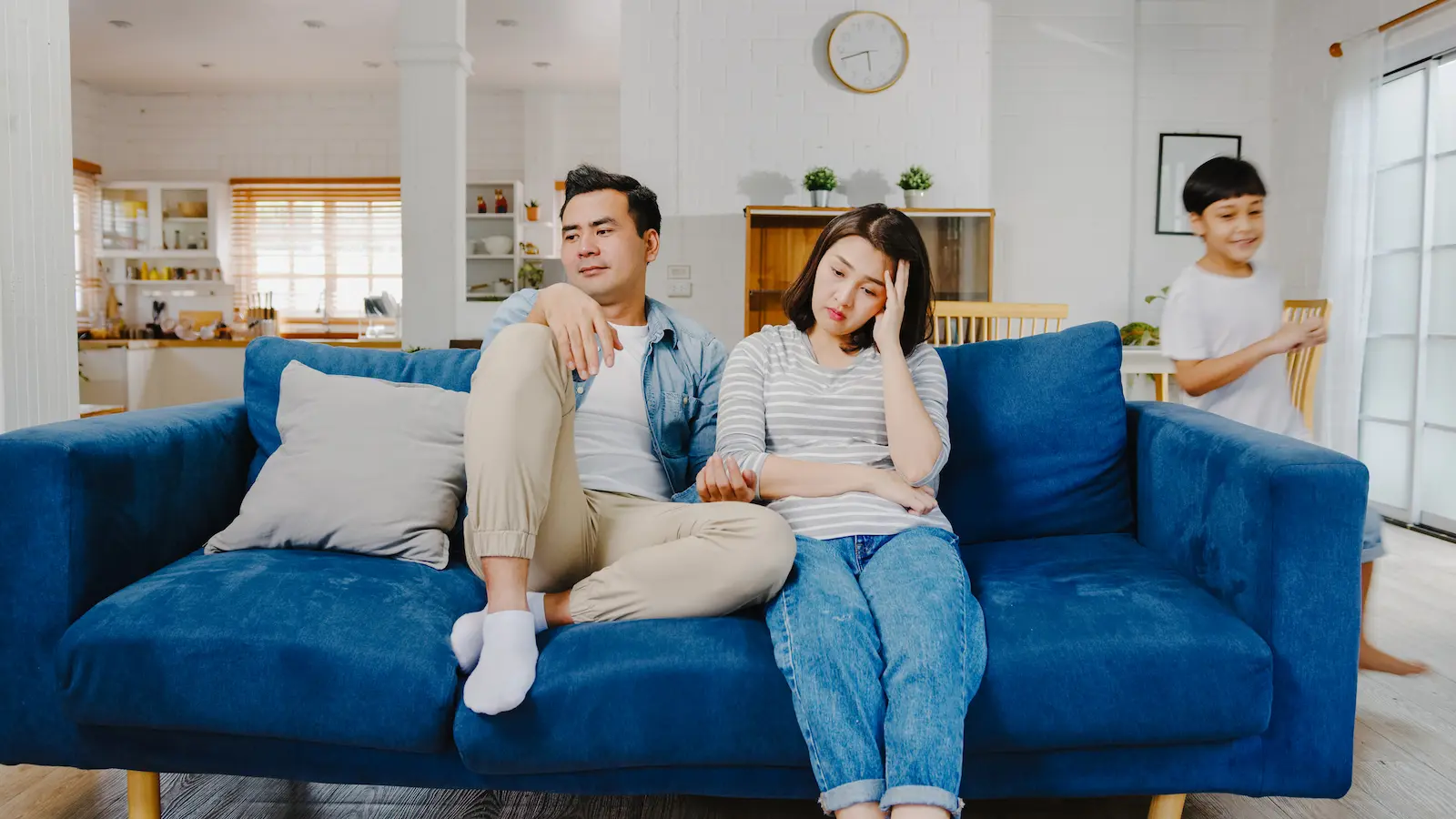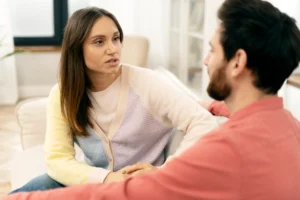All people have a basic need to be loved and cared for. But more and more Americans are living alone, according to the U.S. Census—often not by choice—and that’s creating a loneliness epidemic that can hurt our health and happiness.
While many of us consider family or romantic partners our first line of defense against loneliness, journalist Rhaina Cohen explores another option: deep, committed friendships. Though most of us have friends, she argues, we don’t always consider the potential for non-sexual friendships to become committed partnerships like those we associate with marriage or romantic relationships.
Her book, The Other Significant Others, is an eye-opening account of people who’ve been creating what she calls “friendship partnerships,” where they plan their lives together in creative, non-traditional ways. Ultimately, her book makes the case that we should stop assuming marriage or romantic partners are the only viable options for intimacy and start opening up to other models of loving relationships.
X

I spoke with Cohen about her book and what it means for society at large.
Jill Suttie: What are some of the characteristics of the relationships you describe in your book?

Rhaina Cohen
Rhaina Cohen: I’m looking at a really specific kind of friendship that rises to the level of a partnership—a platonic partnership. The difference between that and a standard-issue friendship is the level of commitment and involvement that people have in each other’s lives. These are friends who are building a shared life together; they’re essential, not peripheral, parts of each other’s lives.
There is also a level of intentional and open communication you see between these friends about what they want the relationship to look like and how much the other person means to them. For the most part, they express affection in a way that’s similar, maybe, to romantic relationships, but would be seen as over-the-top or too direct in friendships.
JS: When you interviewed people in these relationships, how were they similar to or different from romantic relationships?
RC: They were similar in the sense that they had the kind of abiding commitment and [intertwined] life that we see with romantic relationships. This was the reason that I decided to focus on these friendships, rather than other kinds of friendships. They provoke questions, such as why we think romantic relationships are so special or why we assume sex is so important to intimacy.
One difference in these friendships is that they were less hermetically sealed than a lot of romantic relationships are. They weren’t maybe quite as inward-looking; they often had a wider nest of friends or an intricate community. They show that it’s possible to have a really central relationship, but not have it completely dominate your entire life. In fact, many of these people have both a romantic partnership and a platonic partnership in addition to their broader community. Maybe that can be a model for people who have, until now, seen only a monogamous romantic relationship as the cornerstone of their life.
JS: Let’s talk about one example from your book: Art and Nick. These two men are from evangelical Christian backgrounds—one gay and celibate, the other not—and they faced some interesting hurdles in becoming each other’s committed partner. Many people assumed they must be having sex when they weren’t. What does this say about our society’s obsession with sex as the ultimate mark of intimacy?
RC: I think when people hear the term intimacy, they think sexual intimacy. And, to the extent emotional intimacy is involved, people assume that’s linked to a sexual partner. This comes up in their story, in particular, because of the homophobia in their religious communities. Many people in the church were concerned that [their relationship] was a backdoor homosexual marriage. They couldn’t understand how two men could live together and talk about being family to each other and not actually have some sort of sexual relationship.
But this came up in less conservative settings, too. Another pair of men I write about who are both straight, Andrew and Toly, also confused the people around them. They had peers and a boss presuming that they had a romantic relationship. The mother of one of them couldn’t quite wrap her head around the idea that her son had a platonic life partner.
It’s kind of tragic that we collapse different forms of close intimacy into one category and make that inextricably bound to sex when it doesn’t have to be. Even Nick himself initially conflated sexual attraction and emotional intimacy because he had never experienced intimacy within a friendship. That’s not through any fault of his own, but because of a culture that, particularly for men, discourages closeness. Men are afraid that they’ll be perceived as gay [when they aren’t].
Another pair of straight men who I interviewed, who’ve been best friends since they were teenagers, have heard every single possible joke about the nature of their friendship. They’re not afraid of being perceived as gay, but they’re frustrated that it’s apparently impossible for people to see two men talk to each other all the time, who are each other’s confidants, and not map on something that is sexual. I think it’s a failure of imagination.
JS: It seems we like to categorize people and have trouble understanding couples who don’t fit neatly into our view of the world. But it seems like, historically, this kind of intimacy was more acceptable.
RC: If you transport the same behavior to a different time or to a different place, it’s no longer mind-scrambling. I wish I’d had time to include photos in the book. I think photos of men getting their portraits taken, where they are really entangled in one another, would be so striking for a lot of people. Not all of those men were romantically involved with each other. This was a normal, acceptable way to carry themselves. In fact, there’ve been all sorts of ways that people found real close connection outside of a marital relationship.
History is not just telling us what happened in the past, but also challenging our ideas about what is “forever” and “universal” [in relationships]. I’d like people to be able to exist in more of a gray zone and to realize there isn’t a stark dividing line between what romantic love is and what platonic love is. You can experience infatuation in a platonic relationship and not have any sexual piece. You can experience a companionate form of romantic love that doesn’t necessarily make it a friendship. But people are so intent on trying to make things feel clear that they miss the opportunity to see all the forms of connection that are possible, if you’re willing to move beyond neat and narrow categories.
JS: You challenge the notion that romantic love is the pinnacle of intimate relationships and that it matters more than other intimate relationships. What are some of the disadvantages of adhering to that view?
RC: One thing I find interesting is that in an age where we’re hyper-aware of different forms of discrimination, the privileges afforded to couples are not high on people’s radar, even though it’s really pervasive and affects an enormous number of people. The latest stats I saw [show] about 46% of American adults are single. And that’s a huge portion of the population that the culture treats as if they’re incomplete. There’s this whole idea that you become complete, you find your best friend and soulmate, when you find a romantic partner. Lots of people live outside of that, and not all of them feel incomplete or lonely.

The Other Significant Others: Reimagining Life with Friendship at the Center (St. Martin’s Press, 2024, 312 pages)
There are many disadvantages of “compulsory coupledom”—the belief that the only proper way to be a successful adult is to be coupled. Some of that is external—like you might not be invited to parties because you’re not part of a unit or, in the U.S., there are legal and financial disadvantages to not being coupled. I also saw the internal ramifications of this kind of pressure. People felt like their real lives had not begun because they weren’t partnered. They necessarily had a hole in their lives they needed to go out and fill.
Getting to learn about these intimate friendships allowed people, in some cases, to start questioning the privileging of couples that they’d internalized and to realize they weren’t missing anything. There are tangible and emotional harms for people who aren’t coupled—not only people who never get married, but people who got married when they were 30 or 40 and end up divorcing or surviving their spouse. As long as we have this hierarchy that places romantic relationships at the top, we have very little to offer the huge subset of Americans who are not at any given point coupled.
JS: What about the negatives for married people adhering to this view?
RC: Research has shown that married people are happier when they’re satisfied with their social networks outside of their marriage. There’s research looking at how married couples deal with stressors in their marriage, showing they wouldn’t get such high cortisol spikes if they had close relationships outside of the marriage. The point is that putting so much emphasis on marriage—asking a marriage partner to be a best friend, soulmate, confidante, and co-parent—isn’t working for a lot of people. Every individual case is going to vary. But distributing the load, taking the pressure off, can help make marriages stronger.
It would also be easier for people to put more on their friends if we recognized that and didn’t take it as an affront to a romantic partnership to spend time with your friend or your sister or some other close person and talk something through with them. That doesn’t mean that the marriage isn’t close. We all need more than one person that we care for and cares for us.
JS: In some of these friendship partnerships, one or the other partner wanted to start dating or even marry another person. How did the friendship navigate that? Were there challenges?
RC: The challenges came largely because there’s an expectation that a romantic partner is supposed to be the number-one person. If that’s what you’ve been told all your life, then a romantic partner may feel neglected or that there’s some violation of a pact. There’s a range there—for example, maybe a boyfriend was very possessive and the fact that he felt threatened [by the friendship] was an indication that it wasn’t a great relationship. Or maybe a romantic partner, even after being presented with the friendship early on, didn’t totally understand how important it was. Sometimes that created tensions. But there were also cases where these different relationships thrived in the company of the other.
Just to go back to Nick and Art, as an example. Nick experienced both things. He had a romantic partner who was very critical of the friendship with Art because she was concerned there was too much room for potential romance. It required Nick to defend the amount of time and emotional investment he had with Art. When that relationship ended, Nick ended up dating another woman who herself had people in her life who she considered chosen family, who she had moved across the country with and lived with. For her, it was a relief to have somebody who totally got the significance of other types of relationships. So, they have found a really great coexistence. All three people benefit from having these different forms of support.
JS: I have some pretty intimate friends. But we haven’t reached what you’re talking about, planning our lives around each other. For those who may be looking for this type of connection, do you have recommendations for how to create it?
RC: One exercise I might suggest people do is to come up with a list of all the roles that a romantic partner is supposed to fill. This might run the gamut from figuring out a grocery list together to living together to needing help editing an important work email to sharing your best news. If you come up with all those things and then take that person off the table as the default [option], you can think about who would be best suited for this role. Who could you turn to?
If you already have pre-existing friendships, maybe some of those roles would be suited for them, or for a sibling or cousin. It might be somebody other than a romantic partner. Or maybe those people aren’t there yet. Maybe the person I’d most want to help me make a tough decision under stress would be my friend Sue, but we’re not that close. It could be a signal to you to get to a place where that would feel like a comfortable ask. Some roles feel kind of intimate and you need to get close. But I think it helps if people can unbundle all of the roles they have wrapped up into a romantic partner and imagine who else could fit in.
A nice example from the book is Natasha and Linda, two friends who’re raising a kid together and have something pretty close to a conventional partnership, minus the sexual component. They don’t live together. They said they couldn’t really live together because one’s messy and one’s very neat. So, they are vertical neighbors instead, living in the same condo building in different units. They were freed to make that decision because they weren’t beset by expectations that they live together.
More close connection could be forged if, individually and collectively, we were able to think about other types of people in our life who can be there for us. My biggest hope is that the book is a conversation-starter and a mind-opener.













